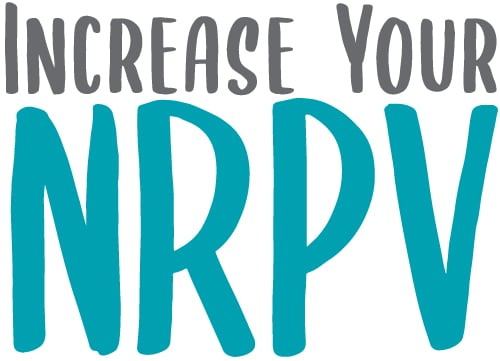Book: Travell & Simons' Myofascial and Dysfunction: The Trigger Point Manual - 2nd Edition
- All treatment sections include a number of Trigger Point release techniques in addition to spray and stretch.
- Presents the major progress in the understanding of the pathophysiological basis for many of the clinical phenomena associated with myofascial trigger points.
- Pictorial index on the front leaf illustrates what part of the body is included under each of the five parts of this volume. Each part is identified by a red thumb tab and begins with a pain-and-muscle guide.
- Every muscle chapter is uniformly arranged with fourteen headings and begins with highlights, a summary of key points in that chapter.
- The section on systemic perpetuating factors in Chapter 4 was rewritten and updated - based on clinical experience and research projects.
- Peer-reviewed body of literature with blinded, controlled studies that are scientifically credible.
- Distinction between trigger points located in the middle portion of the muscle belly (central trigger points) and those located in a region of muscle attachment (attachment trigger points).
- A chapter that presents a new understanding of the nature of Trigger Points. It also considers the role of Trigger Points in the family of syndromes related to occupational overloads of muscles.
- Includes a chapter on the diaphragm and the many functions of the intercostal muscles which also considers the contribution of other muscles to respiration.
- Features 107 new drawings.
- This edition marks the transition of the trigger point concept from the status of a syndrome of unknown causes of disease to that of an experimentally established neuromuscular disease entity.
- Addresses the close interaction between Trigger Points and articular (somatic) dysfunctions and calls attention to that relationship in practically every chapter.
- Emphasis is now shifting from pain as the cardinal feature of a trigger point to increased muscle tension and its consequences.
By David G. Simons MD, Clinical Professor, Department of Rehabilitation Medicine, Emory University School of Medicine, Atlanta, GA.,
1064 pages. Publication Date: 1998
Special Order:
Items that either ship directly from the factory, is made to order or those that require additional shipping considerations.
Special orders can be placed by calling customer service at 800.821.9319.
Please login to view professional pricing or inquire whfdsfdsen placing your order.
Special Orders are processed in a timely manner to assure customer satisfaction.
-
 Hazmat:
None
Hazmat:
None
-
 HCPCS*:
None
HCPCS*:
None
* North Coast Medical, Inc. cannot guarantee that suggested codes are the most current available.
This information is not intended to be, nor should it be considered billing or legal advice.
It is within the sole discretion of the customer to determine the appropriate billing code, as well as whether the use of a product complies with medical necessity.
Item Availability Definitions
-
In Stock:
Standard Shipping: Orders placed by 5:00 PM EST will ship the same day.
Expedited Shipping: Orders placed by 11:00 AM EST will ship the same day.
-
Out of Stock:
Shipment times depend on when the out-of-stock items arrive in our inventory. If your order includes both in-stock and out-of-stock items, we will ship the in-stock items first. The out-of-stock items will be back-ordered and shipped together once all are available.
Please note: Freight and handling charges are calculated based on the original order. Back-ordered items will be shipped and invoiced separately, but no additional freight or handling charges will be applied.
-
Direct Ship:
Items are shipped directly from the product manufacturer. Shipping times may vary, depending on the efficiency of the individual manufacturer.
-
Special Order:
Requires additional details, such as the delivery environment and service level, to provide an accurate shipping cost and expected delivery date from the manufacturer.
-
On Demand:
Items will be directly ordered from the manufacturer and included in our next incoming shipment. Once we receive your items, we will ship them to you from one of our two domestic warehouses.
-
Pending:
Due to supply chain disruptions and other interruptions from the manufacturer, we are currently unable to provide an estimated delivery date. We will continue to accept orders and fulfill them on a first-come, first-served basis as inventory becomes available.
Buy 2 Get 1 Free Special
Add 3 or more ActivaPatch IntelliDose 2.5 into your cart, and enter promo code AP25 during the checkout process.
No Quantity Limit, Limited Time Offer
The more you buy, the more you save!
Examples:
Add 3 to your cart you'll only pay for 2.
Add 6 to your cart you'll only pay for 4.
Add 12 to your cart, you'll only pay for 8.
Note: Sales tax is due for the total amount of ActivaPatch IntelliDose 2.5 boxes in your cart.
Add 3 or more ActivaPatch IntelliDose 2.5 into your cart, and enter promo code AP25 during the checkout process.
No Quantity Limit, Limited Time Offer
The more you buy, the more you save!
Examples:
Add 3 to your cart you'll only pay for 2.
Add 6 to your cart you'll only pay for 4.
Add 12 to your cart, you'll only pay for 8.
Note: Sales tax is due for the total amount of ActivaPatch IntelliDose 2.5 boxes in your cart.













